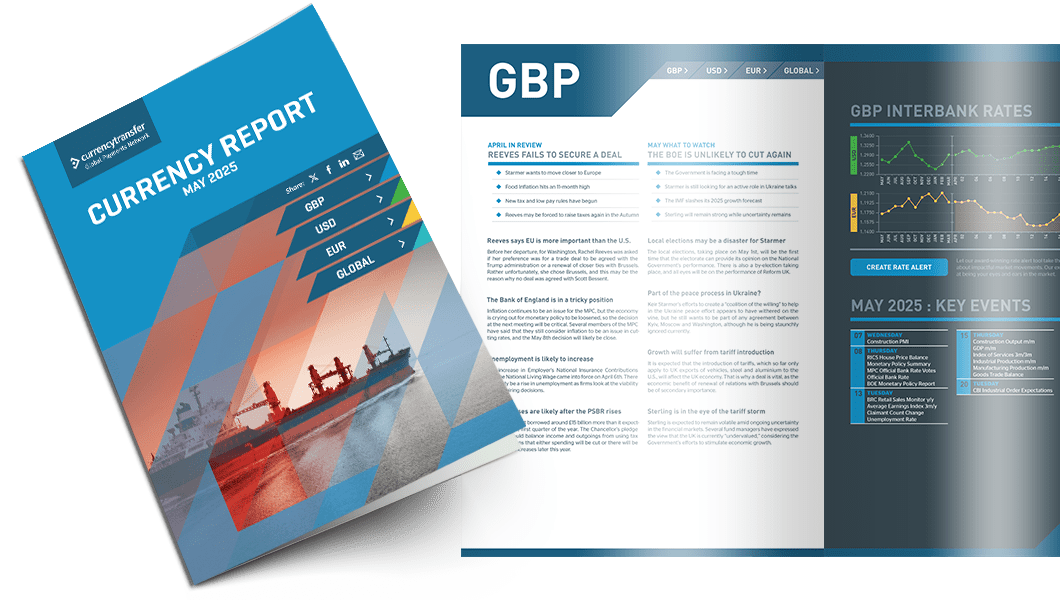
Highlights
- Buy British sentiment is rising
- Hawkish Bostick sees only one cut this year
- Inflation eased unexpectedly in March
A high minimum wage is a threat to productivity
They called for Andrew Bailey and his colleagues on the Monetary Policy Committee to start to cut rates at once and make four twenty-five basis point cuts by the end of this year.
It is well known that Bailey is fiercely protective of the Bank’s independence, but KPMG believes that unless cuts begin by June’s meeting at the latest, the Government’s slim chance of winning the election will be lost.
In his most recent press conference, Bailey told reports that a cut in rates is “in play” but when questioned on the timing of the first cut, he replied “not yet”.
Headline inflation fell to a lower-than-expected 3.4% last month.
Although there was an 8-1 majority in favour of rates remaining on hold at the most recent MPC meeting, it is unlikely that when the permanent committee members decide that it is time for the first cut the vote will be as clear-cut.
Both Catherine Mann and Jonathan Haskell have spoken eloquently about their concerns that there is secondary inflation within the UK economy that a cut in interest rates may reignite.
Their concerns centre around the level of wage demands and settlements that continue to be above the rate of inflation, But KPMG says: “delaying interest rate cuts could compound the ongoing weakness in the economy.”
The consensus view of the City of London is that there will be three cuts in interest rates this year beginning at the June MPC meeting.
Meanwhile, close to a million homeowners are going to see their fixed-rate deals come to an end this year. While they will undoubtedly be paying more on a floating rate basis, a delay in rate cuts may “tip the balance” in favour of the cost of living crisis lasting longer than is necessary.
A survey published yesterday coincided with the improvement in manufacturing output to provide the market with further evidence of the nascent recovery from a sector of the economy that has been in decline for almost as long as most can remember. Six in ten UK firms are now actively trying to “buy British” The research from Made in Britain found the two key drivers of economic patriotism among UK companies are “to help the British economy and support British jobs” and environmental reasons the trade association’s fifth annual survey has found.
Sterling has now more than recovered its losses from Monday. Yesterday, it rallied to a high of 1.2656 versus the dollar and closed at 1.2652.

Read our latest currency report
Most impactful events planned this month and how they could impact your business
The economy is beginning to cool off
The second of this week’s data from the employment market was published yesterday. Following the news that job vacancies are still “buoyant” and more than cover the rise in job losses, the number of new jobs created in the private sector was significantly higher than market expectations.
The ADP report on private sector jobs saw an increase of 184k, which was significantly higher than last month’s figure which was revised upwards to 155K. It is worth repeating that there is extraordinarily little correlation between the private sector jobs figure and the overall non-farm payrolls, which is due for release tomorrow.
For what it’s worth, the majority of market participants see a figure of 200k for the headline number of new jobs created.
For several months, going back to when the FOMC was still hiking rates every month, there has been an expectation that the level of interest rates would fall significantly, but so far that has not happened.
For that reason, the outer boundaries of the estimate range from 125k to 275k.
Several FOMC members have made speeches this week, including Fed Chair, Jerome Powell.
Powell hinted that the Fed is still on course to cut rates three times this year, a sentiment that was agreed with by Austan Goolsbee.
The President of the Chicago Fed commented that price increases were a “little higher” than had been expected in January and February, and although the Fed is still on course to cut three times this year, he wouldn’t be drawn on the timing of the first cut.
Meanwhile, the President of the Atlanta Fed, Raphael Bostic, painted a far more hawkish picture. Bostic spoke yesterday of his growing belief that there may only be one cut in rates given the persistence of core inflation.
Boric sees the economy as having significant momentum and any weakening will be at a “very incremental” level.
The market preferred to take its lead from the fall in service sector output as a sign that the Fed may be forced to begin rate cuts earlier than the consensus view.
The dollar index tumbled to a low of 104.23 and closed a single point higher at 104.24.
A June rate cut is now considered almost certain
Not only does the fall in headline inflation solidify the expectation that a cut in rates is imminent, but it also raises the belief that inflation may overshoot the ECB’s 2% target.
Were inflation to fall below 2% In the coming months, it would attract criticism that the Bank either paused its rate hikes too late or was overly aggressive in hiking rates in the first place.
Core inflation, which strips out volatile items like food and energy, is still a little higher than the headline. Although this may be what is driving the ECB, the fact that it is higher than the headline provides comfort that the overall rate is declining.
While this appears to “green light” the upcoming cut in interest rates, several members of the Governing Council are still concerned about the rate of increase in wages.
Austrian Central Bank Governor, Robert Holzmann, believes he is more of a realist than several of his colleagues at the ECB.
He has consistently been by far the most hawkish member of the Governing Council, but over the past week he has gone from favouring a single cut in rates, but not until September, to saying that cuts (plural) in interest rates could begin as soon as June. He did however caution that the ECB should not get too far ahead of the U.S.
He went on to say that he does not have an “in principle” objection to a June cut, but the ECB should continue to strive to be data-dependent.
Holzman believes, as many market practitioners do, that a June cut which is not matched by the Fed may see the euro collapse, which could easily undo the benefits of cutting rates given the inflationary effect of a weak currency.
The euro had its best day in close to two weeks yesterday, rising to a high of 1.0836 and closing at that level. Until the uncertainty about interest rates ends, there will continue to be a raised level of volatility.
Have a great day!

Exchange rate movements:
03 Apr - 04 Apr 2024
Click on a currency pair to set up a rate alert
Alan Hill
Alan has been involved in the FX market for more than 25 years and brings a wealth of experience to his content. His knowledge has been gained while trading through some of the most volatile periods of recent history. His commentary relies on an understanding of past events and how they will affect future market performance.